The eagle-eyed amongst you might have noticed that yesterday’s chord chart had different style chord diagrams to usual. With Apple ditching support for 32 bit apps in the next version of macOS, my chord making app of choice, Sibelius 6, is rapidly heading for obsolescence. So I’ve been hunting around for new ways of making them.
I stumbled across Fretspace and gave their demo a try (I’ve had no contact with the developer and this isn’t a paid review – because paid reviews are trash). And thought I’d share my thoughts for anyone looking for an app like this.
A big warning: the last update to the app was January 2018. And the Softpress haven’t updated their other apps recently either. Also, they don’t list the app as being supported on the developer’s support page. But they have been active on their forum recently so perhaps it’s not entirely abandoned.
The Basics
Fretspace is a macOS-only app and is priced at $29 (£25). You can download a time-limited demo from their site (click the “try” button at the top right).
The app creates chord and scale diagrams for a variety of instruments including guitar, bass, mandolin, banjo and, obviously, ukulele.
Here’s how the chord charts look:

Testing It Out
Back when I reviewed iOS chord apps, I came up with some tests to see how well suited to the ukulele their chord shapes are:
C test: Pass if the A-string is fretted with the 3rd finger rather than the first finger.
Em test: Pass if g-string is played open rather than at the 4th fret.
Fmaj7 test: Pass if the default chord is playable (i.e. not 2413) and another point if 5500 is there at all.
C9 test: Pass if both C9 and Cadd9 chords are available and have playable default shapes.
Here’s how Fretspace handled the test:

A fail on the C test and the 5500 test and a pass on everything else.
The Good Stuff
Easy to use: I found Fretspace intuitive and picked it up in no time. The layout is very simple. Almost to a fault as it looks plain.
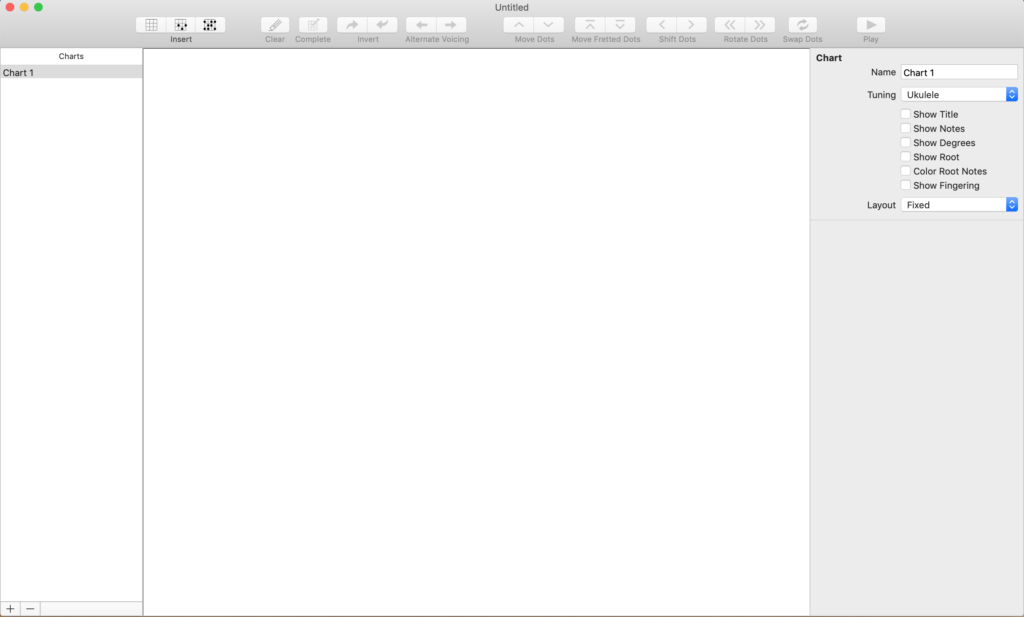
But that is fine with me. I’ll take ease of use over prettiness any day.
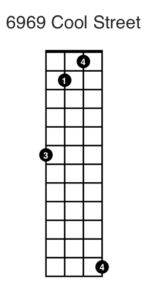 Extensive musical options:
Extensive musical options:
It’ll let you come up with whatever impossible chord shape you can imagine and let you name it anything,
I particularly appreciate the name not having to be a real chord name as I occasionally use an apostrophe to indicate different chord inversions and neither Sibelius nor GuitarPro would let me do that.
Ukulele suitable: The app has in-built ukulele support. It comes with standard, high-g tuning only but it’s very easy to add different tunings.
The app mostly works very well for ukulele tuning without weirdness. The only weird thing I’ve found is that the scale boxes don’t like the re-entrant tuning and won’t show any scale notes on the high-g string. It doesn’t have this problem with high-G tuning. Here’s the default C scale on high-g uke on the left and low-G on the right:
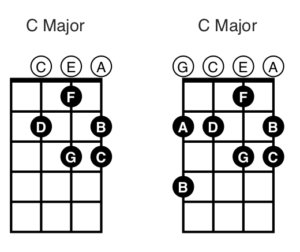
Lots of options for the information displayed: For both chords and scales you can choose between displaying the degree of the scale (left), the note being played (middle) or the fingering (right). You can also choose to highlight the root note in red.
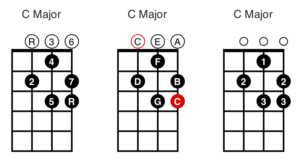
The Not So Good Stuff
Poor export options: The app has no way to simply export the charts as a single image. So to get an image you have to select print, save it as a PDF. Then open the PDF and export it as an image.
What you can do is copy each individual chord or scale as vector graphics then paste it into a document. You can select all the chords and copy them at once. But that won’t give a single image of them just a pile of individual chords.
Good image export options seems like a basic function this sort of app should have.
Lack of visual options: Other than changing the number of frets shown, there aren’t any changes you can make to the look of the chord and scale charts. You can’t change the font or the thickness of the lines. Which means it doesn’t look exactly as I’d like it to. For one, I’d like the line indicating the nut to be thicker so you could instantly see it.
Can’t change defaults: You can choose a default instrument and tuning and that’s about it. So every time I put in a C chord, for example, I’d need to go into the menu and change the fret number. And I’d like to make the default chord boxes five frets long but the default is four and I can’t find a way to change it.
Nitpicks
– Barre chords aren’t shown explicitly. I like to make it very clear when a single finger is fretting multiple strings. Fretspace (first chart below) only indicates it with the fingering numbers. Whereas GuitarPro (middle) links all fretting markers and Sibelius (right) arches over all barred notes.
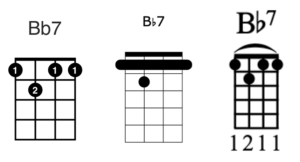
– Doesn’t have split-view in full screen.
– Right clicking on the chord and scale boxes does nothing.
Overall
Fretspace is a pleasant app to use, creates good-looking charts and is versatile in the chords and scales it can create. It is massively let down by the ridiculously limited export options. And the lack of recent updates makes it a risky buy. Particularly with a new version of macOS on the horizon (it is 64 bit at least).
I don’t mind paying a decent price for apps. I wouldn’t mind at all paying $29 for a quality chord and scale app. But at that price I expect a well featured, polished app that’s regularly updated. And Fretspace isn’t that.
I’m going to keep trying out solutions to this but if I end up deciding Fretspace is the best option, I’ll be happy with it.


